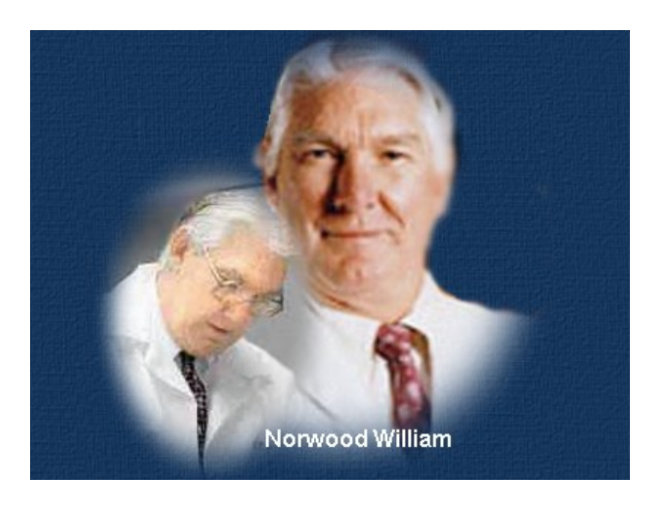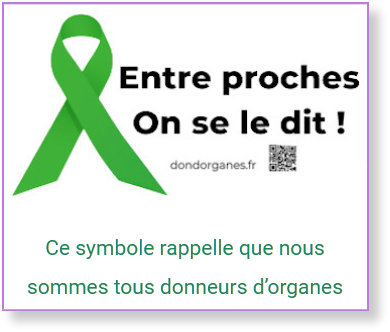Norwood William
Célébrités en cardiologie
(Celebrities in cardiology)

Norwood William. © Heart and Coeur ©
 Norwood William
Norwood William
Procédure de Norwood
L'opération de Norwood est la premiére des trois opérations de coeur. Cette intervention est le plus souvent faite pendant la premiére semaine de vie de l'enfant.
(Stage I (operation de Norwood) faite aprés la naissance.
Stage II (operation de Glen (bidirectionel), semi Fontan ) faite entre l'age de 3 à 9 mois.
Stage III (opération de Fontan) faite entre l'age de 18 à 4 ans ).
Pourquoi l'opération de Norwood:
Puisque le côté gauche du coeur ne pompe pas bien, le coeur est reconstruit, ainsi le coeur droit devient la cavité de pompage principale. Aprés l'operation de Norwood, le ventricule droit pompe le sang des poumons et du corps.
Explication de la technique de l'opération de Norwood:
Le vaisseau sanguin partant du câté droit du coeur appelé l'artére pulmonaire, est coupé.
Une extrémité (l'extrémité la plus proche des poumons) est cousue pour effectuer une fermeture.
L'autre extrémité (l'extrémité la plus proche du coeur) est cousue sur l'aorte, qui est le grand vaisseau sanguin partant du coeur gauche.Puis un tube est mis en place pour creer une « nouvelle aorte » plus grande et plus conséquente (Le tube s'appelle un shunt de Blalock-Taussig (BT)).
La paroie entre les cavités supérieures du coeur est enlevée, ce qui permet au sang oxygéné venant des poumons de circuler de la cavité supérieure gauche vers la cavité supérieure droite du coeur.
Le sang va alors vers la bonne cavité inférieure puis dans le corps.
Maintenant le sang partant du coeur, circule normalement du coeur droit, en passant par la valve pulmonaire, dans tout le corps par cette nouvelle aorte.
Cette opération, maintenant connue sous le nom de "procédé de Norwood," a non seulement révolutionné la qualité de soin des enfants nés avec cette cardiopathies , mais a également contribué à l'établissement de l'ére moderne de la compréhension, de la pratique, et de la philosophie du traitement pour les formes les plus complexes des cardiopathies congènitales. La formation chirurgicale de Dr. Norwood a été accomplie dans plusieurs établissements de cardiologie prépondérants du pays. Il a servi la chirurgie cardiaque à l'université des hâpitaux du Minnesota. Sa formation dans la chirurgie cardiothoracique a été accomplie à l'hôpital de Brigham ( brent - Harvard/Peter) et aussi à la faculté de l'hôpital des enfants, à l'école médicale de Boston et de Harvard. De 1984 à 1994, il était chef de chirurgie "Cardio thorax" à l'hôpital des enfants de Philadelphie et professeur en chirurgie à l'université de l'école de médecine de Pennsylvanie . Avant sa nomination à l'hôpital pour enfants de duPont et de sa filiale académique, l'université médicale de Jefferson .
Le Dr. Norwood est Co-fondateur et dirigeant de l'institut d'Aldo Castañeda Genolier, en Suisse. Ses patients viennent du monde entier.
 Norwood William
Norwood William
the Norwood operation
The Norwood is the first of the three heart operations.It is most often done during the first week of life.
(Stage I (the Norwood operation) is done soon after birth.
Stage II (the bidirectional Glenn procedure, partial Fontan or a staging procedure before the Fontan) is done at three to nine months of age.
Stage III (the Fontan procedure) is done between 18 months and 4 years of age).
Since the heart's left side does not pump well, the heart is rebuilt so the right side of the heart becomes the main pumping chamber. After the Norwood, the right ventricle pumps blood to both the lungs and the body.
How is the Norwood operation done?
The blood vessel leaving the right side of the heart called the pulmonary artery is divided.
The far end (the end closest to the lungs) is sewn shut. The near end (the end closest to the heart is sewn into the aorta, which is the large blood vessel leaving the left side of the heart. A patch is sewn in this area to make the "new aorta" or neo-aorta bigger and stronger.
Now all the blood leaving the heart goes from the right side of the heart through the pulmonary valve and out to the body through the new aorta.
A hollow tube that connects the new aorta to the pulmonary artery is sewn in place.
The tube is called a Blalock-Taussig (BT) shunt. The BT shunt lets some of the blood pumped to the body go to the lungs.
The wall between the heart's two upper chambers is removed.
This allows red blood coming back from the lungs to flow from the left upper chamber to the right upper chamber.
The blood then goes to the right lower chamber and out to the body.
This operation, now known as "The Norwood Procedure," has not only revolutionized the care of children with this defect, but also has contributed to the establishment of the modern era of understanding, practice, and philosophy of treatment for the most complex forms of congenital heart disease. Dr. Norwood's surgical training was completed at some of the country's pre-eminent medical facilities.
He served his residency in general surgery at the University of Minnesota Hospitals. His fellowship training in cardiothoracic surgery was completed at Harvard/Peter Brent Brigham Hospital. Harvard and Boston Chidren's served as the site of his pediatric cardiothoracic surgery fellowship experience. Dr. Norwood is board-certified in surgery and thoracic surgery. Subsequent to fellowship training, Dr. Norwood held positions on the faculty of Children's Hospital in Boston and Harvard Medical School. From 1984 to 1994, he was Chief of Cardiothoracic Surgery at Children's Hospital of Philadelphia and Professor of Surgery at the University of Pennsylvania School of Medicine. Prior to his appointment to the duPont Hospital for Children and its academic affiliate, Jefferson Medical College of Thomas Jefferson University, Dr. Norwood co-founded and directed the Aldo Castañeda Institute in Genolier, Switzerland. His patients come from around the globe.
Under Dr. Norwood, one of the world's most highly experienced and specialized cardiac care teams has been assembled at the Alfred I. duPont Hospital for Children.



